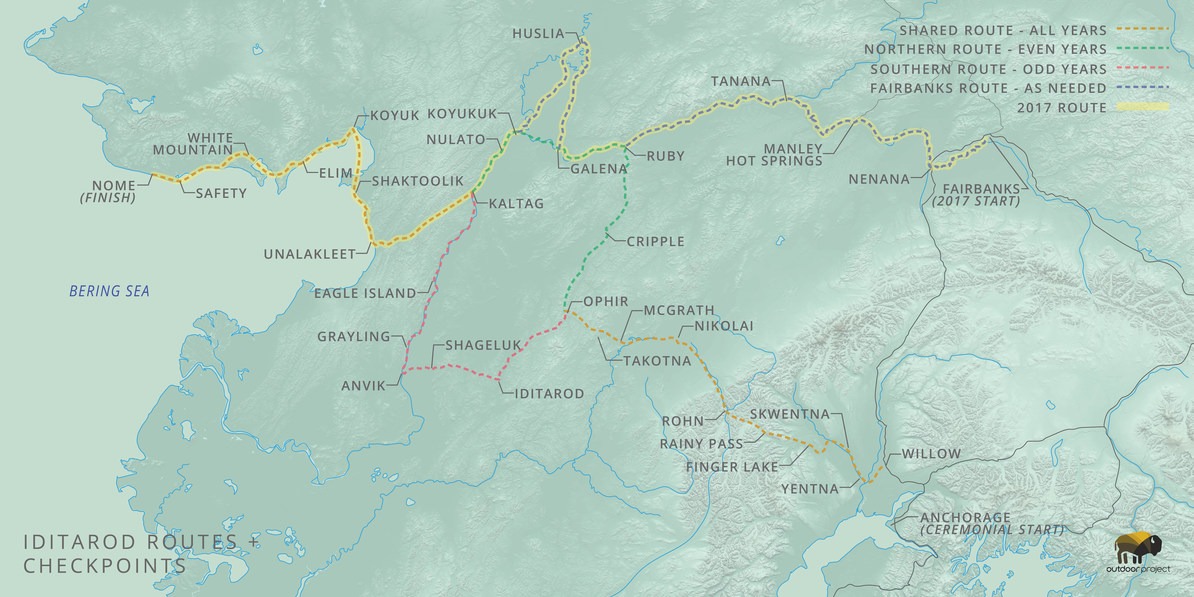You are here
As is characteristic of The Last Frontier, Alaska assumed a unique cadence when it came to adapting modern transportation technology—at least compared to the rest of the United States. Thus it was not the birth of the locomotive, the airplane, or even the prospect of putting a man on the moon that motivated the Alaskan people to divest their daily commutes from their dog teams…it was the snowmachine.
Even though it’s been almost 60 years since the snowmachine—also known as “the iron dog”—made its debut, the lore and the culture of mushers and their teams live on in a big way in Alaska as evidenced by the world-famous Iditarod race. Though this wasn’t always the case.
Used more than just for daily commutes, dog teams were integral in transporting goods and medicines across desolate, frozen tundra and in helping the famous Eskimo scouts patrol the western half of the states during WWII. They also played a major role in settling and establishing Alaska’s northernmost towns. In 1964, just as these teams were being phased out of existence, it became clear to the Wasilla-Knik Centennial Committee that this piece of history was too much to simply let slip away, and so, on Alaska’s centennial anniversary of becoming a United States territory, Chairman Dorothy Paige conceived the idea of a commemorative dog sled race.
Though the first several years were less than successful, Joe Redington took the reins and turned everything around in the early 70s. Page’s dog sled race course was relatively short, and Redington’s dream was much bigger. He wanted to not only save the sled dog culture, but move the event into a new, treacherous arena: the 1,000-mile Iditarod Trail between Seward and Nome.
Today, the mushers who are able to make the journey along the famed freight route in 10 days blow away their historical counterparts. These professionals and the race have garnered so much attention that many athletes and their teams receive hefty sponsorships that support them throughout the rest of the year. The culture of sled dog racing for sport has spread worldwide with races all along the northern hemisphere, though it’s hard to contest that the epicenter for the fandom and the best teams in the world still reside in Alaska…on the Iditarod Trail.

The official Iditarod Race course shifts each year—it no longer follows the exact route that the original mushers took, though the ceremonial start of the race always begins in the very heart of Anchorage with thousands of attendees and day-long festivities. Typically, there are two courses that alternate every other year. The odd-year trails wind around different parts of the state, threading together more small towns so as to garner bigger crowds and more support.
This year’s map along with each checkpoint and general mileage can be found here. Most years, due to the treacherous conditions outside of Anchorage, dog teams are transported to Willow, Alaska, after the ceremonial first day. This year, however, the committee made the decision to change the restart location to Fairbanks “due to the poor conditions of critical trail areas in the Alaska Range,” according to the official press release. This is only the third time in the race’s long history that extreme weather conditions have prompted the move.
This year, for the 45th Iditarod, 73 teams are registered including the top ten finishers from last year’s race. The first day of the race will take place in the heart of Anchorage on Saturday, March 4. While the teams have had only four hours to get to the restart location in Willow in years past, the restart is set to take place this year on March 6 in Fairbanks at 11 a.m.





Comments
Sign In and share them.